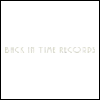Sample This! (Third Edition) is your opportunity to learn about sampling directly from the professionals. This book is for both the established musician who wants to develop a greater understanding of what sampling can do to help them make music, as well as the musician who is taking their first steps in sampling. Sample This! contains hundreds (literally) of tips from professional musicians with years of experience of sampling, sound design, and creating large sample libraries. It is a resource you will want to return to again, and again. In addition, purchasers of the book will also receive TSW-X VST, a sample-based synthesizer (Windows PC (XP) compatible) together with a wide range of sample material from Back in Time Records (after submitting proof of purchase).

This new printed book is written by skilled writer and sample expert Klaus P. Rausch, bitr CEO and maker of so many sample products, in close cooperation with Simon Cann, gifted author of books like "How to Make a Noise: A Comprehensive Guide to Synthesizer Programming" and "Building a Successful 21st Century Music Career" and more (for more details visit his website www.noisesculpture.com).
The new version of Sample This! is a printed book in a perfect size, a must-have for everybody who is working with samples and sample-based VSTs. Release date at amazon.com is November 1, and you can pre-order it right now here: http://www.amazon.com/Sample-This-Third ... 417&sr=8-4
List Price: $14.95
